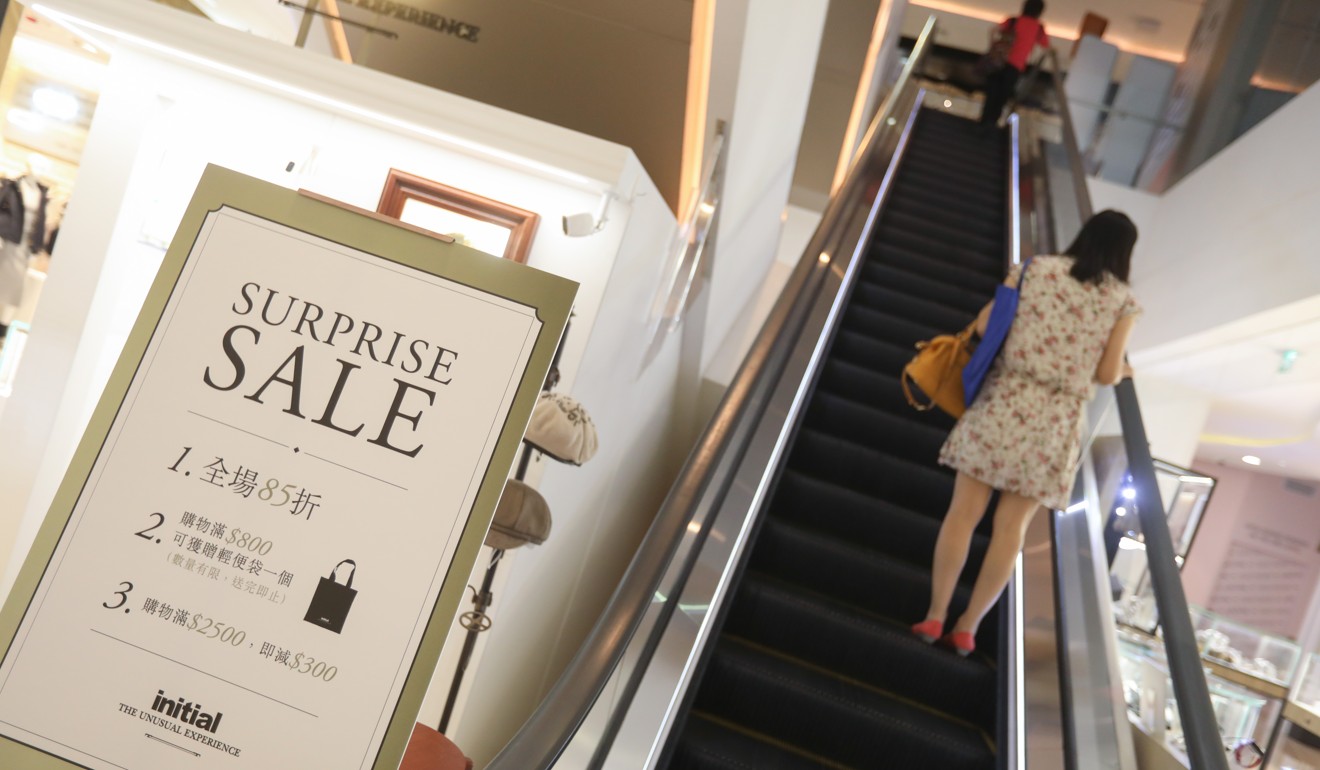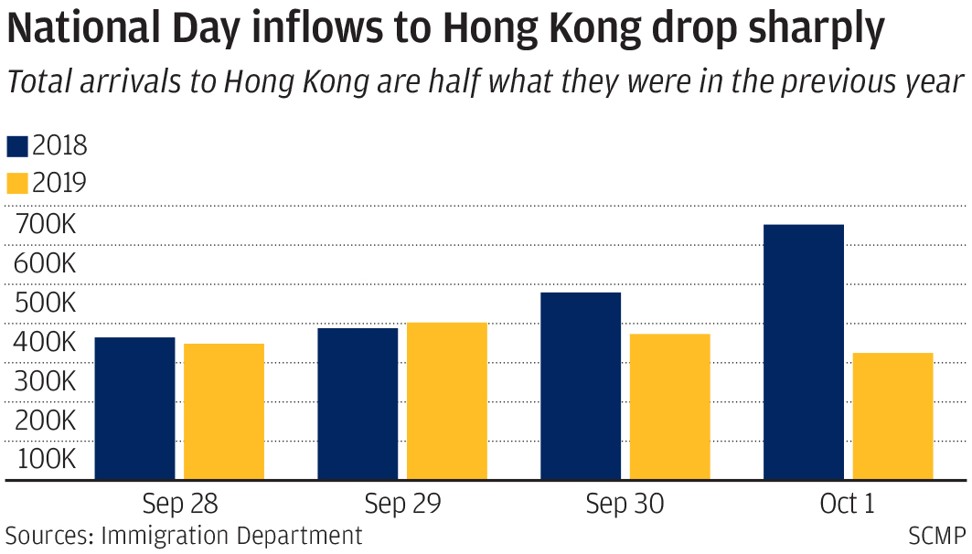
Hong Kong retail sales suffer worst decline on record amid anti-government protests and US-China trade war
- Value of sales plunges 23 per cent to HK$29.4 billion in August, compared with same month last year
- Government says year-on-year fall is steeper than the drop recorded during Asian Financial Crisis
Retail sales in Hong Kong plunged a record 23 per cent in August compared with the same month last year, amid the double whammy of anti-government protests and the US-China trade war.
The figure dropped to HK$29.4 billion (US$3.76 billion) in August year on year, the Census and Statistics Department revealed on Wednesday.
A government spokesman said retail sales by value registered the steepest year-on-year decline for a single month on record, even worse than that posted in September 1998 during the Asian financial crisis.
“Apart from the weak consumer sentiment amid subdued economic conditions, the plunge in August mainly reflected the severe disruption to inbound tourism and consumption-related activities caused by the local social incidents,” he said.
The 9,000-member Hong Kong Retail Management Association warned the worst was yet to come and October’s retail sales could reach a new low as anti-government protests showed no signs of abating.
“The magnitude of the August decline is incredible,” association chairwoman Annie Tse Yau On-yee said. “The trade war has hurt consumer sentiment since the beginning of this year, while the protests exacerbated the situation since July.”
Retailers counting cost after Hong Kong protesters ravage shops on National Day
She urged private developers to cut rents for retailers or they would be forced out of business.
Protesters were out in force every weekend of the month. A general strike on August 5 brought much of the city to a standstill while an August 18 march on Hong Kong Island drew an estimated 1.7 million people. The airport was also targeted, leading to the cancellation of flights.
Violence during clashes between protesters and officers also escalated in the month with police firing a live round for the first time since the protests, triggered by a now-withdrawn extradition bill, broke out in June.
“There were many protests at shopping malls, which forced stores to shorten business hours or even close for a day,” Tse said.
“On a lot of occasions, many MTR stations were closed together with shopping malls connected to them, which left no business at all for tenants.”
On Tuesday, for example, rail operator MTR Corporation progressively shut down half of its 94 stations as National Day protests swept across the city. At least 25 shopping malls suspended business on the day, the 70th anniversary of the founding of the People’s Republic of China.
Amid the ongoing chaos, tourist arrival figures took a battering, slumping 40 per cent in August year on year – the worst since the outbreak of Severe acute respiratory syndrome in 2003.
The number of mainland Chinese visitors – the largest sector – dropped more than 50 per cent.
On October 1, traditionally a peak time for mainland travellers and the first of the seven-day “golden week” National Day holiday, the number of arrivals from across the border shrank 62.4 per cent to about 93,100 year on year.
Food deliveries up as Hongkongers stay home amid protests
Inbound visitors to Hong Kong through 15 checkpoints halved to 325,000 on Tuesday year on year. Among them, ferry terminals, major rail and boundary crossings with Shenzhen posted the worst volume declines.
Hong Kong International Airport saw arrivals tumble 31.1 per cent to 60,342.
There were 24,233 inbound visitors at the West Kowloon high-speed rail terminus, down 59 per cent from the same day last year and way below the monthly average of about 60,000.

In a four-day period, from September 28 until October 1, the total number of entries fell 23.1 per cent to 1.44 million people passing through immigration checkpoints into Hong Kong.
Visitors continue to steer clear of Hong Kong. Cathay Pacific Group, for example, experienced a 38 per cent fall in people visiting the city on its airlines in August, the busiest travel month of the year.
Just one in five of the 65 million visitors to Hong Kong last year were not from mainland China. Visits from the city’s key market fell 42.3 per cent in August while hotel occupancy rates fell to 66 per cent from 94 per cent, tourism data showed.
Hong Kong’s loss is Singapore’s gain as it misses out on golden week
Luya You, transport analyst at Bocom International, said if the downward trend at Hong Kong airport over the National Day travel period was maintained for up to two months, it was “extremely likely” that the full-year traffic drop would exceed the 3 per cent decline expected.
“Since the protests show few signs of winding down, we can expect lacklustre traffic numbers in October at the very least,” You said. “However, as we move away from peak seasons, monthly drops may slightly ease into September from August.”
Airport officials last week predicted it would handle 2.24 million fewer travellers annually compared to 2018, a decline of 3 per cent, despite a strong first half of the year to July, handling an extra 1.03 million customers. Some 74.6 million people travelled through the airport last year.
Additional reporting by Kanis Leung




